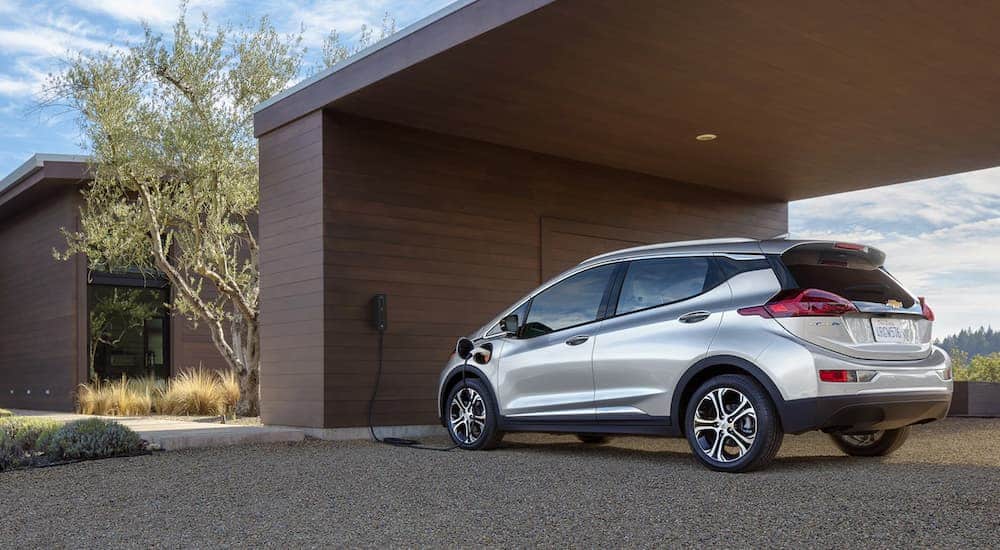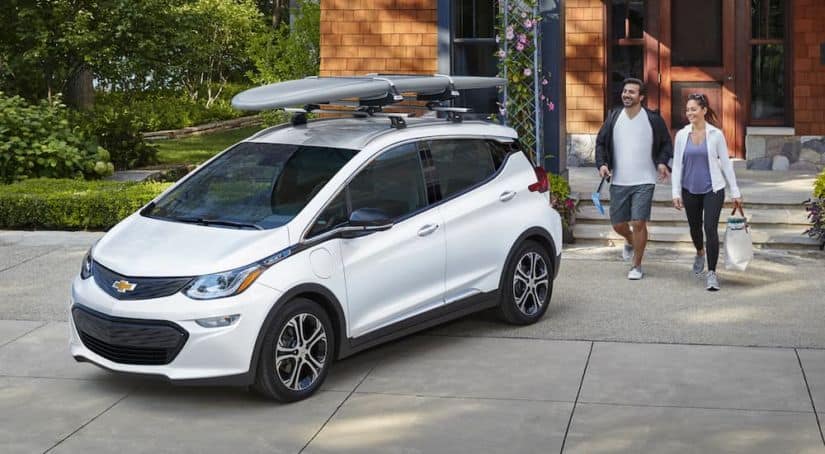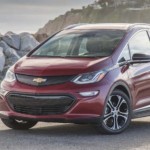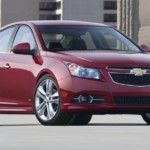Battery technology has now improved to the point where an electric vehicle (or EV) can be a legitimate replacement for a gasoline-powered internal combustion engine (or ICE) vehicle, and many drivers today are now considering buying an EV for their next car. Not only does driving an EV help protect the environment, but they also have several real advantages over ICE cars when it comes to convenience and operating costs. However, while the market leader when it comes to EVs is indisputably Tesla, it may surprise you to learn that one of the best all-around EVs currently on the market can be found on the lot of your local Chevy dealership. Although it may not have the glamor of Tesla, the Chevy Bolt offers a lower price and better performance than almost all of the other serious EVs currently on the market.
Charging & Range
The single greatest advantage of an EV is that you will no longer need to rely on gas stations. Although a lot of opponents of battery power highlight long charge times and the current low availability of public charging stations (although this is changing quickly as more are built), the truth is that an EV owner will almost never need to use a public charging station or wait for the vehicle to charge. This is because an EV can be recharged at your own house or apartment. Just plug it in when you get home, and you will have a full battery when you leave. When plugged into a standard 120-volt wall outlet, a Chevy Bolt will recharge at a rate of around 4 miles per hour. Although this is enough to cover many peoples’ daily commute, the Chevy Bolt also comes standard from the dealership with a 240-volt charger that can provide around 25 miles per hour of charge time. This charger can be installed in any house (although hiring a professional electrician is highly recommended) and will restore the battery from 0 to 100% overnight. Additional 240-volt chargers are also available through your Chevy dealership for around $500.
However, being able to recharge at night and go all day only works as long as the EV has enough range for your daily driving needs. And while there are more and more EVs on the market, there are still only a handful of them that have enough range for anything more than a short daily commute. If you have to drive a long distance to work every day, or if you need a car that can also handle after-work events and weekend trips, your choices are more limited. Currently, outside of Tesla’s lineup, there are only four EVs on the market with over 200 miles of range. These are the Nissan Leaf S Plus at 226 miles (the base model Leaf has only 150 miles of range), the Kia Niro EV at 239 miles, the Hyundai Kona Electric at 258 miles, and the Chevy Bolt at 259 miles.
But not only is the Chevy Bolt the longest-ranged of the Tesla competitors, it actually has more range than some Tesla models––the base Tesla Model 3 standard range can only go 250 miles on a charge, and even the upscale Tesla Model X standard range tops out at 305 miles. So if you want an EV with the best range you can get without paying the premium prices associated with Tesla’s premier models, then visiting your local Chevy dealership is going to be your best option.

Purchase Price & Operating Cost
But not only does the Chevy Bolt cost less than a top model Tesla; it also cost less than all of its other competitors. Wonder down to your local Chevy dealership, and you will find a starting MSRP of $36,620. In comparison, the Hyundai Kona Electric begins at $37,190, the Kia Niro EV at $39,090, and the Nissan Leaf S Plus at $31,600. Better performance at a lower price? Is there anything not to like? However, even a relatively affordable EV such as the Chevy Bolt still has a fairly high upfront cost compared to similar ICE cars. A Chevy Malibu, for instance, starts at $22,095 and a Chevy Trax at $21,300. But this difference does narrow considerably when you take into account the available tax credits for purchasing an EV. Although this varies by state and your local Chevy dealership will have more information, the total rebate can total several thousand dollars.
Further, this upfront cost does not take into account the much lower operating costs of an EV. According to the EPA estimates, a Chevy Bolt will burn around $550 of electricity a year. A Chevy Malibu will cost around $850 a year to fuel and a Chevy Trax roughly $1000 a year. That is $300 to $450 a year in savings assuming you drive the average amount, and fuel prices do not go up in the future. Second, EVs do not require anywhere near the same amount of routine maintenance as ICE cars. To begin with, no engine means no oil changes, so that is probably another $100 per year saved as well as a couple of hours of your life not spent visiting your Chevy dealership’s service department. Further, because they use their electric motors for regenerative braking, EVs almost never need their brake pads or rotors replaced. In fact, the only maintenance items listed for the Chevy Bolt for its first 150,000 miles are rotating the tires and replacing the internal air filter. All in all, by driving an EV instead of an ICE car, you will likely be looking at operating cost savings of at least $500 per year––and possibly far more depending on how much you drive.

EV Performance
However, comparing the Chevy Bolt to a Chevy Trax or base Chevy Malibu is not quite accurate. This is because the electric motor in the Chevy Bolt produces 200 horsepower and 266 lb-ft of instant torque, which results in 0 to 60 mile per hour acceleration of roughly 6.3 seconds. In comparison, the Chevy Trax or base Chevy Malibu only manage a fairly sedate 9.3 seconds. In order to get an ICE vehicle with similar performance to a Chevy Bolt, you will have to step up to a higher trim $33,370 Chevy Malibu or $31,600 Chevy Equinox with their 2.0L turbocharged engines. Although these ICE vehicles certainly come with more features and luxuries than a base model Chevy Bolt, factoring in the relatively high performance of an EV further justifies the higher upfront cost. And the Chevy Bolt does not just put down higher numbers; it does so in near-silence––when driving an EV, you will never again have to tolerate engine noise drowning out your radio when passing or climbing hills. If you still think that EVs cannot provide a fun and comfortable driving experience, then find some time to visit a Chevy dealership and test drive a Chevy Bolt. It will change your mind.
But the Chevy Bolt is not just fast compared to normal ICE cars; it is also among the fastest of the available EVs. As with range, the Hyundai Kona Electric comes closest with an acceleration of 6.6 seconds, while the Kia Niro EV and Nissan Leaf S Plus are a bit further behind at 7.4 seconds. And while the Chevy Bolt will not keep up with the rear-wheel drive Tesla models, its front-wheel drive architecture will provide a safer and more stable platform for driving in bad conditions. And despite being listed as a car, the Chevy Bolt also offers an impressive 7.4” of ground clearance––more than the electric SUVs like the Hyundai Kona Electric (6.2”) or the Kia Niro EV (6.3”). So if you do need a car that can handle snow or limited off-road driving, then the Chevy Bolt is by far your best choice.



